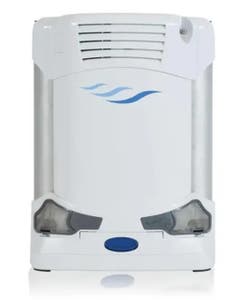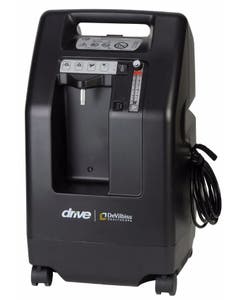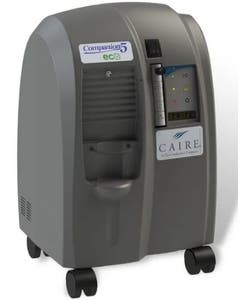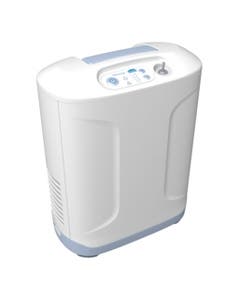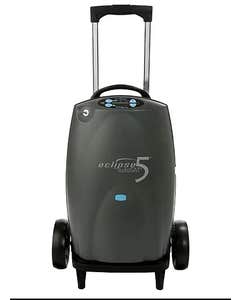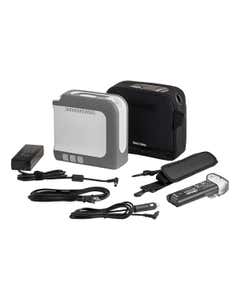
Most healthy people take oxygen for granted. Unfortunately, breathing easily and without assistance is not a privilege everyone enjoys. More than 1.5 million adults suffering from respiratory disorders in the United States use supplemental oxygen as a means to improve their quality of life.1 Others don’t realize that they could benefit from oxygen therapy. So what are the signs that a person needs oxygen?
What are the Symptoms of Low Oxygen?
There are a number of symptoms of low oxygen. The most common include frequent shortness of breath, even without overexertion, rapid breathing and an accelerated heart rate, as well as a persistent cough and sweating. At times, individuals in need of supplemental oxygen may experience confusion, as the lack of oxygen begins to impact cognitive abilities. If you experience any of these symptoms, then it may be time to talk to your doctor about oxygen therapy.
What is Oxygen Therapy?
If you suffer from a respiratory disorder, then you may need a supplemental source of oxygen to help you breathe normally. This may come in the form of an oxygen tank or an oxygen concentrator. Oxygen therapy is a prescribed oxygen level that alleviates respiratory disorder symptoms through a nasal cannula. With regular oxygen therapy you may start to notice improvements in other aspects of life like sleep and energy levels.
Who Needs Oxygen Therapy?
Many respiratory illnesses in which the lungs are unable to absorb oxygen properly require supplemental oxygen therapy. For patients who suffer from diseases like COPD, pneumonia, asthma and cystic fibrosis, oxygen helps improve daily life through healthy breathing.
What are the Benefits of Oxygen Therapy?
Regular use of oxygen therapy can lead to overall improvements in your everyday life. For example, oxygen therapy helps alleviate the headaches, fatigue and the irritability that comes with a diminished oxygen supply. Feelings of breathlessness and chronic restless sleep are also improved by oxygen therapy.
The Benefits of Oxygen Concentrators for Oxygen Therapy
One of the preferred methods of oxygen therapy is with the use of oxygen concentrators. Safer, easier and more compact than standard oxygen tanks, oxygen concentrators make life easier for oxygen therapy patients.
Oxygen tanks store compressed oxygen, which is highly flammable. Eventually, those tanks run out of oxygen and need to be replaced. On the other hand, oxygen concentrators filter the air around you to provide constant therapy. Without risk of danger or the inconvenience of running out, this makes oxygen concentrators ideal.
Unlike bulky oxygen tanks, oxygen concentrators are compact and easy to move around. If you travel, portable oxygen concentrators are also available, so you can enjoy your freedom while keeping up with your oxygen therapy.
Choosing an Oxygen Concentrator
If your doctor recommends supplemental oxygen therapy, our experts can help you pick the right equipment that best suits your needs. Call our knowledgeable staff at 888-941-1688 or email us at contact@oxygenconcentratorsupplies.com.
References
- Jacobs SS, Lederer D, Garvey C, et al. Optimizing Home Oxygen Therapy. An Official American Thoracic Society Workshop Report. Ann Am Thorac Soc. 2018 Dec;15(12):1369-81.
Most healthy people take oxygen for granted. Unfortunately, breathing easily and without assistance is not a privilege everyone enjoys. More than 1.5 million adults suffering from respiratory disorders in the United States use supplemental oxygen as a means to improve their quality of life.1 Others don’t realize that they could benefit from oxygen therapy. So what are the signs that a person needs oxygen?


What are the Symptoms of Low Oxygen?
There are a number of symptoms of low oxygen. The most common include frequent shortness of breath, even without overexertion, rapid breathing and an accelerated heart rate, as well as a persistent cough and sweating. At times, individuals in need of supplemental oxygen may experience confusion, as the lack of oxygen begins to impact cognitive abilities. If you experience any of these symptoms, then it may be time to talk to your doctor about oxygen therapy.
What Are The Main Indicators That You May Need Oxygen?
- You Feel Short of Breath When Walking. While it's normal to be out of breath when rigorously working out or walking uphill, it may be a sign of low oxygen when you are out of breath doing normal activities.
- Your Heart Races When You Walk At a Slow or Moderate Pace. When your body is not getting enough oxygen, the brain will signal to the heart to beat faster to better circulate more oxygen. This makes your heart rate go up and brings the feeling of making your heart race.
- Your Walking Oxygen Blood Saturation Is Below 88%. Blood saturation level can be measured using a pulse oximeter. Levels above 90% are considered normal, but below 90% may lead to an oxygen therapy prescription.
- You Feel Tired During the Day. Although feeling tired is normal among all people, those with COPD will also have trouble sleeping or may wake up feeling confused or with a headache. This may be because oxygen levels may drop too low during the night, potentially indicating that someone may need supplemental oxygen.
- Your Fingers or Lips Look Blue. Low oxygen levels could cause a person's fingers or lips to turn to a blue tint. This occurs in more severe cases of low blood oxygen levels. It is recommended to seek medical help immediately if you notice a change of color in either the lips or fingers.
- Edema, or Swelling of the Feet or Ankles. Those with COPD may have foot and ankle swelling because their blood oxygen levels are low. Gravity will move fluids to the lower extremities when they are not properly filtered out because the liver and the kidney do not have the adequate amount of oxygen to properly function.
- When Other Treatments Will Not Help. If an inhaler does not help to improve any symptoms, it may be a sign you need something else. Oxygen therapy is the next step.
What is Oxygen Therapy?
If you suffer from a respiratory disorder, then you may need a supplemental source of oxygen to help you breathe normally. This may come in the form of an oxygen tank or an oxygen concentrator. Oxygen therapy is a prescribed oxygen level that alleviates respiratory disorder symptoms through a nasal cannula. With regular oxygen therapy, you may start to notice improvements in other aspects of life like sleep and energy levels.
Who Needs Oxygen Therapy?
Many respiratory illnesses in which the lungs are unable to absorb oxygen properly require supplemental oxygen therapy. For patients who suffer from diseases like COPD, pneumonia, asthma, and cystic fibrosis, oxygen helps improve daily life through healthy breathing.
What are the Benefits of Oxygen Therapy?
Regular use of oxygen therapy can lead to overall improvements in your everyday life. For example, oxygen therapy helps alleviate the headaches, fatigue and the irritability that comes with a diminished oxygen supply. Feelings of breathlessness and chronic restless sleep are also improved by oxygen therapy.


The Benefits of Oxygen Concentrators for Oxygen Therapy
One of the preferred methods of oxygen therapy is the use of oxygen concentrators. Safer, easier, and more compact than standard oxygen tanks, oxygen concentrators make life easier for oxygen therapy patients.
Oxygen tanks store compressed oxygen, which is highly flammable. Eventually, those tanks run out of oxygen and need to be replaced. On the other hand, oxygen concentrators filter the air around you to provide constant therapy. Without the risk of danger or the inconvenience of running out, this makes oxygen concentrators ideal.
Unlike bulky oxygen tanks, oxygen concentrators are compact and easy to move around. If you travel, portable oxygen concentrators are also available, so you can enjoy your freedom while keeping up with your oxygen therapy.
How Can Oxygen Therapy Can Help Treat COPD?
Oxygen therapy provides supplemental oxygen to improve the flow of oxygen getting into the lungs and bloodstream. This particularly helps COPD patients as they need extra oxygen to properly function. Oxygen therapy uses oxygen concentrators properly manage COPD flare-ups. Doctors are able to prescribe the proper amount of oxygen unique to you to help you continue living an active lifestyle.
How To Raise The Oxygen Level In Blood?
- Stand up or sit straight upwards. Laying down puts pressure on your lungs and could make it harder to breathe.
- Breathe in fresh air. Opening your windows or even going for a walk outside increases your oxygen intake.
- Use an oxygen concentrator. As mentioned, oxygen concentrators will provide supplemental oxygen to improve the oxygen in both your lungs and bloodstream.
- Drink enough water. Water helps to properly hydrate the lungs and bloodstream.
Choosing an Oxygen Concentrator
If your doctor recommends supplemental oxygen therapy, our experts can help you pick the right equipment that best suits your needs. Call our knowledgeable staff at 888-941-1688 or email us at contact@oxygenconcentratorsupplies.com.
References
Jacobs SS, Lederer D, Garvey C, et al. Optimizing Home Oxygen Therapy. An Official American Thoracic Society Workshop Report. Ann Am Thorac Soc. 2018 Dec;15(12):1369-81.
This post was originally published on June 7, 2023, and updated on January 11, 2024



